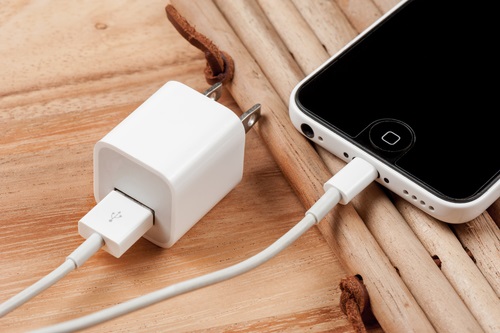

In June, new national efficiency standards that build on prior state standards took effect. These standards reduce the energy wasted by all kinds of battery-powered devices, from electric shavers, to smart phones, to golf carts (but not electric cars). The new federal standards show how strong national standards can build on the success of state-level policy to drive big energy and dollar savings.
American homes and businesses currently employ more than 2 billion battery chargers, or more than six for each person in the US. Under federal law, “battery charger” means the power supply (“wall brick”) unit that plugs into an outlet, the battery that is being charged, and the charge control circuitry that is often integrated into a product like an electric shaver. Since the advent of lithium ion technology, battery capacity has increased and prices have dropped, allowing batteries to power new kinds of devices, and enabling devices that use more power and have longer battery life. The result is that more and more electricity goes through battery chargers.
The US Department of Energy (DOE) initially proposed relatively weak federal battery charger standards in 2012. But in that year the state of California adopted stronger standards, which Oregon subsequently copied. DOE decided to redo its analysis, taking into account the impacts of the California and Oregon standards on the national battery charger market. DOE’s new energy efficiency standards for battery chargers, published in 2016, took effect on June 13 of this year. The federal standards effectively extend the California and Oregon standards to the entire country.
DOE estimated relatively modest saving from the federal standards because it assumed that manufacturers already comply with the California and Oregon standards for battery chargers sold nationally. NRDC estimated that the California and federal standards would increase battery charger energy efficiency by more than 10%, generating combined total savings of 18 billion kilowatt hours per year, or more than enough to meet the annual electricity needs of 1.7 million US households.[1] These electricity savings translate to $2.3 billion[2] in utility bill reductions and 8.6 million metric tons of avoided CO2 emissions[3] per year.
One important difference between the California and federal battery charger standards is that the California standards cover uninterruptible power supplies (“UPS”) – backup battery systems used to provide constant power for computers and other sensitive devices – and the federal standards do not. DOE determined that the California battery charger test procedure did not adequately measure UPS efficiency and moved UPS into a separate standards rulemaking. DOE estimated that federal UPS standards would improve UPS energy efficiency by about 15%, saving users between $1.3 and $3.0 billion and avoiding 49 million metric tons of carbon dioxide emissions over thirty years. DOE completed the new UPS standards in December 2016 but failed to publish them in the Federal Register, a necessary final step, before the end of the Obama administration. The Trump administration has, so far, refused to publish the UPS standard. Three other standards are in the same regulatory limbo. A coalition of environmental and consumer advocates and the Attorneys General from 11 states are pursuing lawsuits to compel DOE to publish all of them.
The battery charger standards success story shows how active state standards effort can drive big national savings, by affecting both the national market and, eventually, the national standard. That success story may have particular relevance in 2018. With federal progress on efficiency standards at a standstill, state leadership is more important than ever.
[1] Based on EIA average US household annual electricity consumption for 2016.
[2] Based on EIA average US residential electricity rate for May 2018.
[3] Based on AEO TWh to MMT of CO2 conversion factor for 2018.





